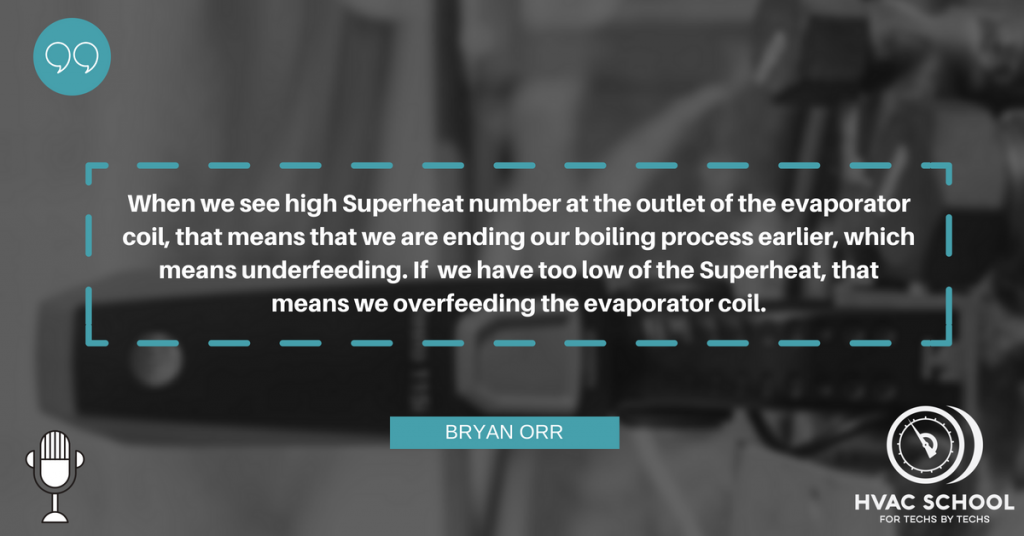Short #11 – Superheat, The True Meaning (Podcast)

In this podcast, we discuss the real significance of superheat and why it is much more than “a way to set the refrigerant charge on a fixed metering device.”
Superheat is the temperature of a vapor above saturation. Many people use it to set the charge on a piston or fixed orifice, but that's not its only purpose. Superheat is a much more important reading than that, and you can take that measurement at a few different places. For example, most of us measure it outside. However, to determine how the system is feeding the evaporator coil, we would take superheat at the evaporator outlet (6-14 degrees is normal for a TXV). However, superheat matters regardless of the metering device type.
Zero superheat indicates that the refrigerant is still at saturation; it is in a mixed state, not entirely vapor. So, we know that we are “overfeeding” the evaporator coil. The boiling process does not finish in the evaporator; it continues into the suction line. Overfeeding is a problem because our evaporator might not boil off all the refrigerant, and we could send liquid to the compressor. The system may be overcharged, or the evaporator load may be too low.
Excessive superheat indicates that the refrigerant is boiling off too quickly in the evaporator coil. In those cases, we are starving or underfeeding the evaporator coil. The boiling process ends too early in the evaporator coil. The system may be undercharged or have too much load on the evaporator coil.
When our superheat is within the proper range, we are feeding the evaporator coil correctly. The majority of that evaporator coil is being fed with boiling refrigerant.
Learn more about Refrigeration Technologies at refrigtech.com.
If you have an iPhone, subscribe to the podcast HERE, and if you have an Android phone, subscribe HERE.
Author:









Comments
To leave a comment, you need to log in.
Log In